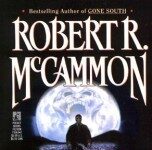In the sprawling landscape of 20th-century thought, few figures have sparked as much controversy and curiosity as Wilhelm Reich. His provocative work Listen, Little Man! continues to challenge readers with its raw intensity and unfiltered critique of societal conformity. dives into the heart of Reich’s vehement dialog, dissecting the fervent passion that drives his message. this review explores the layers beneath Reich’s confrontational prose, inviting readers to reconsider the timeless tensions between individuality and authority that Reich so boldly confronts.
Exploring the Core Themes and Philosophical Foundations of Listen Little Man in Contemporary Contexts
At its philosophical heart, Wilhelm Reich’s “listen, Little Man!” challenges the reader to confront the inertia of societal conformity and the paralysis of individual thought. reich’s searing critique targets the complacency of the ”little man” - the everyday person who embodies the fears, anxieties, and submissiveness imposed by authoritarian structures. The text functions not merely as a social admonition but as a radical call towards self-awareness, urging a departure from mechanical acceptance of inherited norms. In contemporary times, this message resonates profoundly, as individuals navigate the paradox of increased connectivity and persistent alienation. Reich’s piercing insights illuminate how internalized oppression remains a formidable barrier to personal liberation and collective emancipation.
Examining the core themes within modern frameworks reveals a fascinating interplay of psychology, power, and identity. The “little man” is not a mere caricature but a reflective mirror of societal dynamics where power structures manipulate fear,guilt,and submission to sustain control.The philosophical underpinning of Reich’s work-rooted in his belief in orgone energy and the vitality of emotional health-anticipates many contemporary discussions on mental emancipation and authentic living. Below is a condensed breakdown of the key elements that maintain the text’s relevance today:
- Individual Responsibility: Urges the reader to break free from passive acceptance and engage critically with social realities.
- Psychological Liberation: Highlights the necessity of self-examined emotional truth as a foundation for freedom.
- Critique of Mass Culture: Denounces the numbing effect of media and societal norms that perpetuate docility.
- resistance to Authoritarianism: Advocates courage in questioning and resisting oppressive systems, both internal and external.
| Theme | Contemporary Parallel | Philosophical Implication |
|---|---|---|
| Conformity | Social media echo chambers | Loss of authentic selfhood |
| Psychological Oppression | Workplace burnout and anxiety | Need for emotional sovereignty |
| Political Passivity | Civic disengagement | Threat to democratic vitality |
Deconstructing Reich’s Critique of Societal Conformity and Individual Alienation with Thoughtful Nuance

At the heart of Wilhelm Reich’s fiery message lies a profound examination of how societal structures mold the psyche into a state of docile conformity. Reich challenges the reader to peer beyond surface-level complacency and recognise the invisible chains forged by social expectations and cultural norms. His critique is not merely an indictment but an invitation to explore how the “Little Man” becomes trapped within cycles of self-negation-sacrificing authentic desires for the sake of acceptance. This dynamic, according to Reich, breeds a form of alienation so essential that it perpetuates both individual unhappiness and collective stagnation.
His arguments compel us to question the following:
- How does internalized authority shape personal identity?
- In what ways does fear reinforce submissive behavior?
- Can true liberation exist within rigid societal frameworks?
Furthermore, this critical lens reveals a paradox in human behavior-a simultaneous desire to belong and a deep-seated urge to be free. Reich’s exploration exposes the subtle mechanisms by which conformity is maintained, highlighting the psychological toll of suppressing individuality. His insights resonate especially strongly in modern contexts, where social media and cultural expectations amplify pressures to conform. to summarize the tension Reich identifies, consider the table below detailing the opposing forces at play within the ”Little Man”:
| Force | Effect on the “Little Man” |
|---|---|
| Conformity | Ensures safety but fosters passivity |
| Alienation | Creates distance from authentic self |
| Fear | Suppresses rebellion and experimentation |
| Desire for Autonomy | Drives inner conflict and resistance |
Analyzing the Emotional Intensity and Psychological Insights That Shape Reich’s Provocative Narrative

Reich’s narrative pulses with a raw emotional intensity that confronts readers with uncomfortable truths about conformity, fear, and self-deception. His tone veers between scolding and cathartic, crafting an atmosphere where frustration mingles with an urgent call for awakening. This emotional charge serves not merely to provoke but to strip away societal veneers, exposing the deep-seated psychological mechanisms that keep the “little man” imprisoned in mediocrity. In this, Reich doesn’t just criticize; he dissects the habitual patterns of blame, submission, and denial that underpin authoritarian compliance.
Psychologically, the text operates as a mirror reflecting the inner turmoil of the average individual caught between instinctual rebellion and conditioned restraint. It reveals several key psychological insights,including:
- projection: The “little man” externalizes his fears and failures onto scapegoats,avoiding self-accountability.
- Emotional repression: Submerged anger and frustration fuel passive aggression and societal inertia.
- identity crisis: A persistent internal conflict between authentic desire and societal expectations.
| Emotional Element | Psychological Impact |
|---|---|
| Frustration | Catalyzes self-reflection and potential change |
| Shame | reinforces social conformity |
| Alienation | Breeds resentment and internal conflict |
| Fear | Supports submission to authority |
Unraveling the Historical and Cultural Influences Behind Reich’s Call for Personal and Social awakening
Emerging from the turbulent interwar period,Wilhelm Reich’s clarion call for both personal and social awakening was deeply intertwined with the cultural upheavals and political unrest of the early 20th century. His critique extends beyond mere individual change to a diagnosis of societal malaise, rooted in authoritarianism, repression, and the corrosive effects of mass conformity. Reich’s insights can be seen as a reaction against rigid social structures that stifle human vitality and discourage authentic self-expression. He challenged the cultural norms of his time, advocating for a liberation not just of the body, but of the psyche-a holistic emancipation aimed at revitalizing the oppressed “little man” trapped in cycles of fear and submission.
Within this context, Reich’s work resonates notably in how he framed personal awakening as the foundation for political and social change. His arguments underscore the interconnectedness of psychological health and societal well-being, suggesting that the suppression of individual freedom breeds collective dysfunction. Consider this table illustrating key parallels between societal dynamics and personal psychological mechanisms he observed:
| Societal Element | Psychological Equivalent | Implication |
|---|---|---|
| Authoritarian Governance | Internalized Fear and Obedience | Restraint of Desire and initiative |
| Mass Culture Conformity | Repression of True Self | Loss of Authenticity and Willpower |
| Social alienation | Emotional Isolation | Disconnection and Passivity |
Through his multidimensional lens, reich urged individuals to confront not only external social forces but also the internalized barriers that perpetuate cycles of oppression. His calls to action are both a psychological and sociopolitical invitation-to awaken the “little man” from complacency and reclaim agency within oppressive systems. this powerful synthesis of inner and outer liberation continues to inspire critical thought around autonomy,resistance,and freedom today.
Evaluating the Strengths and Limitations of Reich’s Argument Through a Balanced and Critical Lens
Wilhelm Reich’s critique shines in its unflinching examination of societal complacency and personal responsibility. He compellingly portrays the “Little Man” as a symbol of the average individual caught in the web of conformity, fear, and ubiquitous authority. The power of Reich’s argument lies in its raw honesty and psychological insight, urging readers to confront uncomfortable truths about themselves and the structures that govern them. His call for awakening to self-awareness and resistance against internalized oppression resonates deeply, making his message timeless. Additionally, the prose’s candid tone serves as a catalyst for reflection, compelling readers to rethink their role within societal dynamics.
- Strengths: Psychological depth, incisive social critique, emotional impact
- Limitations: At times, the language veers into absolutism, risking alienation of more moderate perspectives
However, Reich’s argument is not without its shortcomings. The text can feel overly didactic, placing a heavy burden of blame on the individual without sufficiently accounting for the complexity of external social, economic, and political forces that shape behavior. This reductionist tendency may inadvertently oversimplify systemic issues, possibly limiting the text’s applicability in broader sociopolitical analyses. Moreover, the tone may inadvertently discourage nuanced dialogue by framing the “Little Man” too harshly, which can deter readers seeking a more empathetic or multifaceted critique.
| Aspect | Evaluation | Impact |
|---|---|---|
| Psychological Insight | Profound and evocative | Engages emotional and intellectual reflection |
| Tone | Direct, at times abrasive | Motivates or alienates readers |
| Societal Analysis | Individual-centric | overlooks systemic complexity |
Reflecting on the Relevance of Reich’s Ideas in Today’s Social and Political climates for Modern Readers

In a world increasingly defined by social fragmentation and political polarization, Reich’s candid dissection of individual complacency and societal malaise strikes a resonant chord. His piercing analysis challenges readers to confront the undercurrents of fear, conformity, and repression that frequently enough dictate public discourse and private behavior alike. Modern audiences find themselves grappling with many of the same existential pressures Reich articulates - feelings of powerlessness in the face of systemic forces, mistrust toward authority figures, and the pervasive impact of emotional suppression on societal health. His call for self-awareness and emotional liberation becomes not just a personal appeal but a collective imperative, urging a re-examination of how social and political climates shape, and are shaped by, the internal landscapes of individuals.
- Emotional Authenticity: Reich’s emphasis on embracing genuine emotional expression counters today’s frequently enough performative social interactions amplified by digital media.
- individual Responsibility: The text serves as a reminder that societal change begins within, challenging readers to transcend victimhood and cynicism.
- Critique of Authority: The skepticism toward political and cultural leaders remains relevant amidst ongoing debates about power dynamics and populism.
| Reich’s Concept | Contemporary parallel |
|---|---|
| Emotional Repression | Social Media Facades |
| Character Armor | Echo Chambers online |
| Powerlessness | Political Disenfranchisement |
How Listen Little Man Challenges Conventional thought and Inspires Self-Examination and Change
Reich’s text acts as more than just a critique; it serves as a mirror reflecting society’s collective fears and complicity. With a direct and unapologetic voice, it jolts readers out of complacency, pushing them to question ingrained behaviors and societal norms. The little man symbolizes the everyman, caught in cycles of self-deception, authoritarian submission, and internalized powerlessness. This archetype challenges the idea that one is merely a passive participant in life, encouraging an acute awareness of personal responsibility and the catalyzing potential of self-examination.
By employing a blend of scathing satire and psychological insight, the book inspires a multi-layered awakening. Its impact resonates through:
- Provoking discomfort: Unveiling uncomfortable truths about conformity and internalized oppression
- Encouraging introspection: Prompting readers to look within and recognize their own subconscious barriers
- Advocating change: Suggesting active resistance against societal conditioning and embracing authenticity
| Aspect | Challenge to Conventional Thought | Inspiration for Change |
|---|---|---|
| Authority | Questions blind obedience | Empowers individual autonomy |
| Self-image | Exposes self-limiting perspectives | Encourages self-acceptance and growth |
| Society | Highlights collective denial | Fosters critical social consciousness |
Practical Recommendations for Readers Seeking to Apply Reich’s Principles in Everyday Life and Personal growth
To integrate reich’s principles into daily life effectively, start by nurturing self-awareness. This means actively observing your emotions, reactions, and patterns without judgment, much like Reich’s call for the “little man” to confront his own inner limitations. Begin small: journal your recurring thoughts or moments when you feel rigid or defensive. Such reflection uncovers buried tensions and helps unshackle entrenched ways of thinking. Additionally, embrace authentic dialogue-practice speaking your truths candidly but compassionately, challenging social facades that suppress genuine expressions. These simple actions create space for personal freedom and emotional resilience.
Practical request is best approached as an evolving process. Consider the following methods to maintain momentum and track progress:
- Daily mindfulness exercises to identify physiological and emotional blockages.
- Periodic self-check-ins-ask, “Am I being honest with myself today?”
- setting boundaries that protect your emotional energy from societal pressures.
- Engaging with supportive communities where open dialogue is encouraged.
| Challenge | Reichian Approach | Expected Outcome |
|---|---|---|
| Fear of confrontation | Practice honest dialogue | Reduced anxiety, increased clarity |
| Emotional repression | Mindfulness and body awareness | enhanced emotional flow |
| Social conformity | Setting personal boundaries | Greater autonomy |
Comparing Listen Little Man With Other Influential Works in Philosophy and Psychology to Highlight Unique Contributions
While listen, little Man! shares the radical spirit found in works like erich Fromm’s The Art of Loving or carl Jung’s explorations of the psyche, Reich’s text offers a more direct, urgent piercing of the everyday individual’s psychological armor. Unlike Freud’s intricate psychoanalytic frameworks, Reich bypasses dense theory to address the reader with an unfiltered, confrontational tone that shakes the complacency of the “little man”-a symbol for the common ego trapped in societal and personal neuroses. This raw immediacy distinguishes Reich’s work, inviting readers not merely to understand their condition but to actively dismantle the cultural and emotional barriers that perpetuate their oppression.
In contrast with classical philosophical texts that often lean on abstract definitions of freedom or virtue, Listen, Little Man! grounds its critique in tangible, lived experience, making it both a personal and sociopolitical call to awareness. The table below highlights key differentiators between Reich’s work and some comparable landmark texts in philosophy and psychology:
| Aspect | Reich – Listen, Little Man! | Freud – The Interpretation of Dreams | Fromm – The Art of Loving | Jung – Man and His Symbols |
|---|---|---|---|---|
| Tone | Direct, confrontational | Theoretical, analytical | Reflective, nurturing | Symbolic, interpretive |
| Audience | Everyday individual | Specialized scholars | General readers seeking self-growth | Those interested in archetypes and mythology |
| Core Focus | Immediate self-awareness and societal critique | Unconscious mind and dream analysis | Love as an art and social force | Symbols and collective unconscious |
| Style | Provocative, accessible | Dense, academic | Philosophical yet practical | Illustrative, exploratory |
This unique blend of accessibility and radical critique has cemented Reich’s work as a pivotal, though sometimes polarizing, text-a bridge between philosophical musings on identity and the raw edges of psychological self-revolution. Its unapologetic insistence that personal change is inseparable from social change remains a vibrant contribution too frequently enough overlooked in classical discourse.
Visualizing the Emotional Landscape of Reich’s Writing: A Guide for Creating Impactful AI-Inspired Artwork
Immersing oneself in Reich’s provocative prose reveals a tapestry of conflicting emotions-frustration, empathy, anger, and introspection-that oscillate between confrontation and compassion. To visually represent this emotional spectrum, artists should consider blending dynamic contrasts such as sharp, chaotic lines juxtaposed with soft, flowing contours. This approach mirrors the tension between the “Little Man’s” suppressive societal pressures and the eruptive,raw energy reich channels through his words. A color palette dominated by bold reds and deep blues, softened by muted earth tones, can evoke the turbulence and grounding aspects of Reich’s critique, inviting viewers to engage more deeply with the psychological undercurrents present in the text.
To fill the emotional void Reich exposes, artwork inspired by his writing may incorporate symbolic elements that provoke recognition and self-reflection:
- Distorted human figures conveying the universal struggle against internal confinement and societal expectation
- Fragmented typography to represent fractured communication and suppressed voices
- Organic textures symbolizing the primal, unfiltered human emotions beneath civilization’s veneer
Below is a concise comparison to guide visual emphasis when translating Reich’s narrative into AI-driven designs:
| Emotional Element | visual Representation |
|---|---|
| Suppression & Conformity | Rigid lines, muted shades |
| Rebellion & Outrage | Bold strokes, vibrant reds |
| Empathy & Reflection | Soft gradients, organic forms |
Assessing the book’s Legacy and Its Role in Shaping Discourses on Freedom, authority, and the Human Condition
Wilhelm Reich’s work continues to resonate as a radical challenge to conventional paradigms of freedom and authority. His incisive critique of societal structures unmasks the subtle coercions that bind the individual, pushing readers to question not only external controls but also the internalized mechanisms that perpetuate conformity. Reich’s interplay between psychological liberation and political autonomy has cemented his place as a pivotal figure in discussions shaping modern social thought, with his insights fostering a deeper understanding of the tensions between individual desires and collective expectations.
Engaging with Reich’s legacy invites a multifaceted discourse that extends beyond traditional philosophical boundaries. His influence can be outlined in several enduring themes:
- Autonomy vs. Authority: Highlighting the conflict between personal freedom and societal control.
- The Human Psyche: Exploring how repression and expression navigate human experience.
- Revolutionary Potential: Advocating for change rooted in self-awareness and emotional truth.
- Critique of Mass Culture: Questioning how cultural norms shape collective consciousness.
| Aspect | Legacy in Discourse | Contemporary Relevance |
|---|---|---|
| Freedom | Emphasizes self-liberation as an ongoing process. | Inspires movements for psychological and political emancipation. |
| Authority | Critiques both overt and covert power dynamics. | Supports skepticism toward institutional dominance. |
| Human Condition | Interprets repression as central to societal malaise. | Influences holistic approaches to mental health and social justice. |
The Writing Style and Narrative Voice That Makes Listen Little Man a Provocative and Enduring Read
Wilhelm Reich’s prose in Listen, Little Man! cuts through the noise with an immediacy that demands attention. His forthright and unapologetically candid voice serves as both a mirror and a hammer-reflecting societal fears while dismantling complacency. Reich’s style is conversational yet charged with urgency, as if speaking directly into the reader’s ear, breaking down complex psychological and sociopolitical concepts without diluting their potency. This narrative intimacy fosters a sense of personal responsibility, challenging readers to confront uncomfortable truths about conformity, fear, and self-deception.The use of short, emphatic sentences interspersed with rhetorical questions heightens the tension, making the text feel alive and confrontational rather than didactic.
Moreover, Reich employs a subtle blend of accusation and invitation, making the narrative voice concurrently antagonistic and beckoning. His tone oscillates between frustration and empathy, as he alternates between chastising the “little man” for surrendering freedom and urging him to awaken from psychological paralysis. The combination of these elements creates a dynamic reading experience characterized by:
- Direct engagement: Addressing the reader as “little man” personalizes and intensifies the critique.
- Accessible language: Avoiding jargon allows diverse audiences to grasp the core message.
- Persistent questioning: Provoking introspection rather than providing easy answers.
| Stylistic Element | Effect on Reader |
|---|---|
| Direct address | Creates intimacy and urgency |
| Short, punchy sentences | Maintains momentum and tension |
| Rhetorical questions | Encourages active reflection |
| Emotional oscillation | Balances critique with empathy |
About Wilhelm Reich The Controversial thinker behind Listen Little Man and His lasting Influence on Modern Thought
wilhelm Reich remains one of the most polarizing figures in 20th-century intellectual history. A psychoanalyst turned social critic, Reich challenged conventional norms with his radical ideas on human nature, sexuality, and societal repression. His work, especially encapsulated in Listen, Little Man!, confronts the complacency and self-delusion he perceived in the average individual-a scathing call for personal responsibility and awareness. Reich’s critique went beyond psychology, touching political ideology, cultural conformity, and even energy science, making his legacy complex and frequently misunderstood.
Though controversial, Reich’s influence on modern thought is undeniable, spanning numerous disciplines. His ideas catalyzed movements across psychology, choice medicine, and countercultural philosophy. Below is a brief overview of key aspects that define Reich’s lasting impact:
- Psychological Liberation: Emphasis on breaking emotional and societal chains to achieve self-realization.
- Critique of Authority: Questioning hierarchical power structures and conformity.
- Holistic Health Perspectives: Early concepts linking mind and body that prefigure modern psychosomatic medicine.
- eclectic Legacy: Influence on both scientific and artistic communities,inspiring new ways of thinking and expression.
| Aspect | Reich’s Contribution | Modern Influence |
|---|---|---|
| Psychology | Emotional armoring and character analysis | Trauma therapy & body psychotherapy |
| Social Critique | Criticism of authoritarianism & mass mentality | Critical theory & social activism |
| Health & Energy | Orgone energy concept | Alternative healing & bioenergetics |
revisiting Wilhelm Reich’s Listen, Little Man! invites us into a charged dialogue between authority and individuality, fear and freedom. This critique has unpacked layers of passion, provocation, and paradox that Reich masterfully weaves, challenging readers to confront uncomfortable truths about society and the self. Whether you emerge puzzled, inspired, or skeptical, the book’s enduring power lies in its ability to unsettle complacency and provoke reflection.As the final page turns, one thing remains clear: Reich’s voice, though complex and contentious, continues to resonate-calling each of us to listen, reckon, and perhaps, to change.










